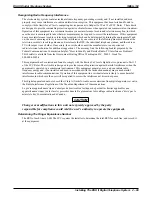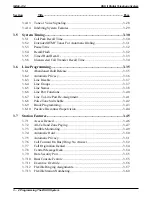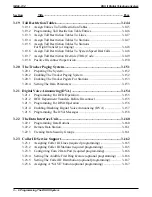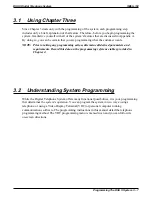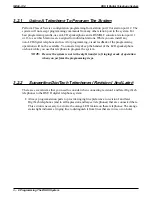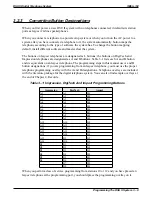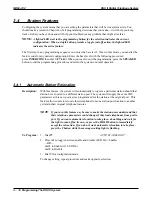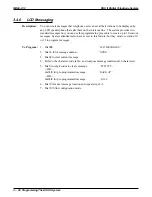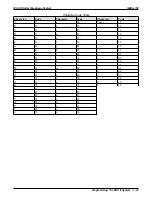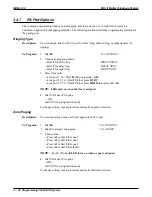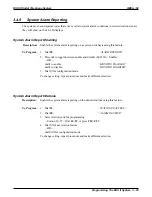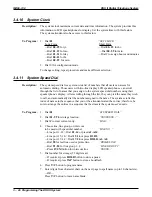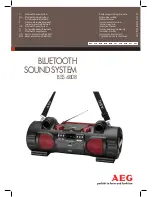
3.2.4
Using A VDT To Program The System
You can perform class of service programming using a Video Display Terminal (VDT) with an
RS-232 compatible, serial interface. (You can use a personal computer running a
communications software program in place of the VDT if you wish.) VDT programming is
completely menu driven and easy to follow. It is arranged somewhat differently from station port
programming categories to facilitate menu usage.
3.2.5
Using Block Programming
You can program a group of lines or stations to have the same configuration as one that you have
already programmed. This block programming feature eliminates the need to individually
program every line or station that requires the same configuration.
3.2.6
Master Clearing The System
After you have completely installed a telephone system for the first time or if a system that you
previously installed has been turned off and placed out of service for a period of time (several
weeks, for example), perform a master clear programming procedure before placing it into
service. If you plan to perform a master clear procedure, perform it first before performing any
other programming procedure. The master clear procedure clears all memory locations of any
unwanted data that may be stored there. Master clearing also clears any previously programmed
data, such as autodial numbers and defaults all class-of-service conditions. Therefore, never
perform a master clear procedure on an existing installed system unless data loss and COS
default are acceptable. Refer to the information provided in the procedure titled Master Clear for
programming details.
3.2.7
Using Programming Overlays
The literature package with the system includes a programming overlay for use in identifying the
buttons required for programming. The overlay fits over the buttons of the programming station.
A full size copy of available programming overlays is also included at the end of Chapter 4. The
overlays correspond to the programming steps listed for each feature, so when you are directed
to press B1, for example, the overlay details which button is B1 for your telephone.
If you are programming the system from a VDT, it is best to allow the telephones to identify
themselves to the system before you button map them. When you do this, the VDT presents the
proper button designations in its prompt and you will not need an overlay or conversion chart.
The system queries you to designate the telephone type for unoccupied station ports. Upon your
response, the system presents the proper button designations in the prompts for these ports.
DSU II Digital Telephone System
IMI66–132
Programming The DSU II System 3 – 11
Summary of Contents for DSU II
Page 31: ......



